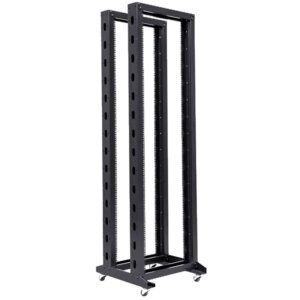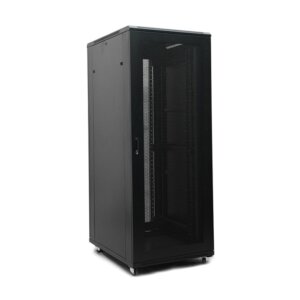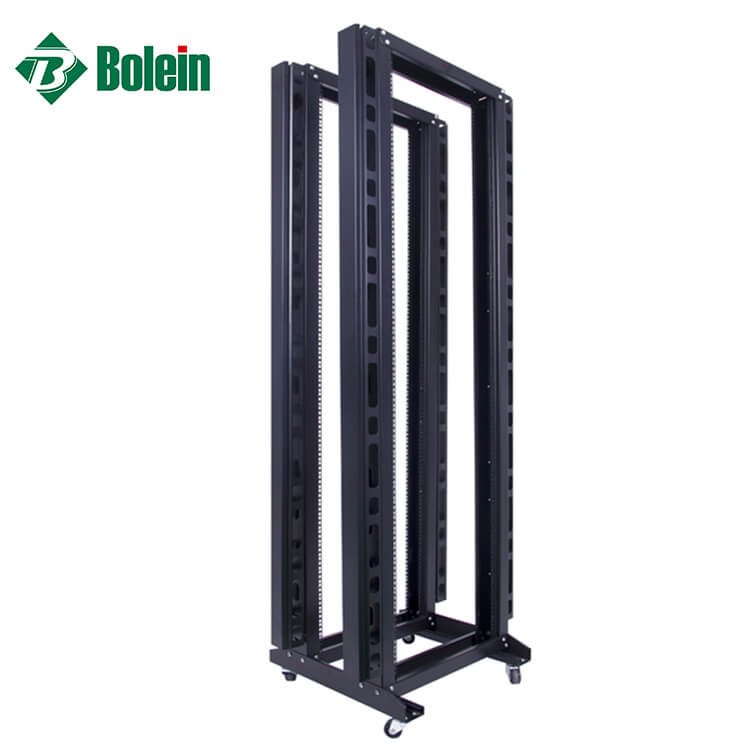An open frame rack is a type of equipment rack used to house IT hardware, such as servers, switches, and other networking equipment, without any side or front panels.
sunny.law2024-09-14T12:24:26+08:00
What is the difference between an open and closed network rack?
The primary differences between open and closed network racks lie in their design, functionality, and use cases:
Open Network Rack
-
Design:
- Lacks side panels and doors.
- Typically consists of a simple frame structure.
-
Accessibility:
- Provides easy access to equipment from all sides.
- Simplifies installation and maintenance tasks.
-
Cooling:
- Offers excellent natural airflow, reducing the need for additional cooling systems.
-
Cost:
- Generally more cost-effective due to its simpler design.
-
Use Cases:
- Suitable for environments with controlled access, like secure data centers.
Closed Network Rack
-
Design:
- Enclosed with side panels, front and rear doors.
- Often includes locks for added security.
-
Security:
- Provides better protection against unauthorized access and physical damage.
-
Cooling:
- May require additional cooling solutions, such as fans or air conditioning, due to restricted airflow.
-
Noise Reduction:
- Helps in reducing noise from the equipment.
-
Use Cases:
- Ideal for environments where security, organization, and noise reduction are important, such as office spaces or public areas.


In summary, the choice between open and closed network racks depends on factors like security needs, budget, cooling requirements, and the environment in which they will be used.
